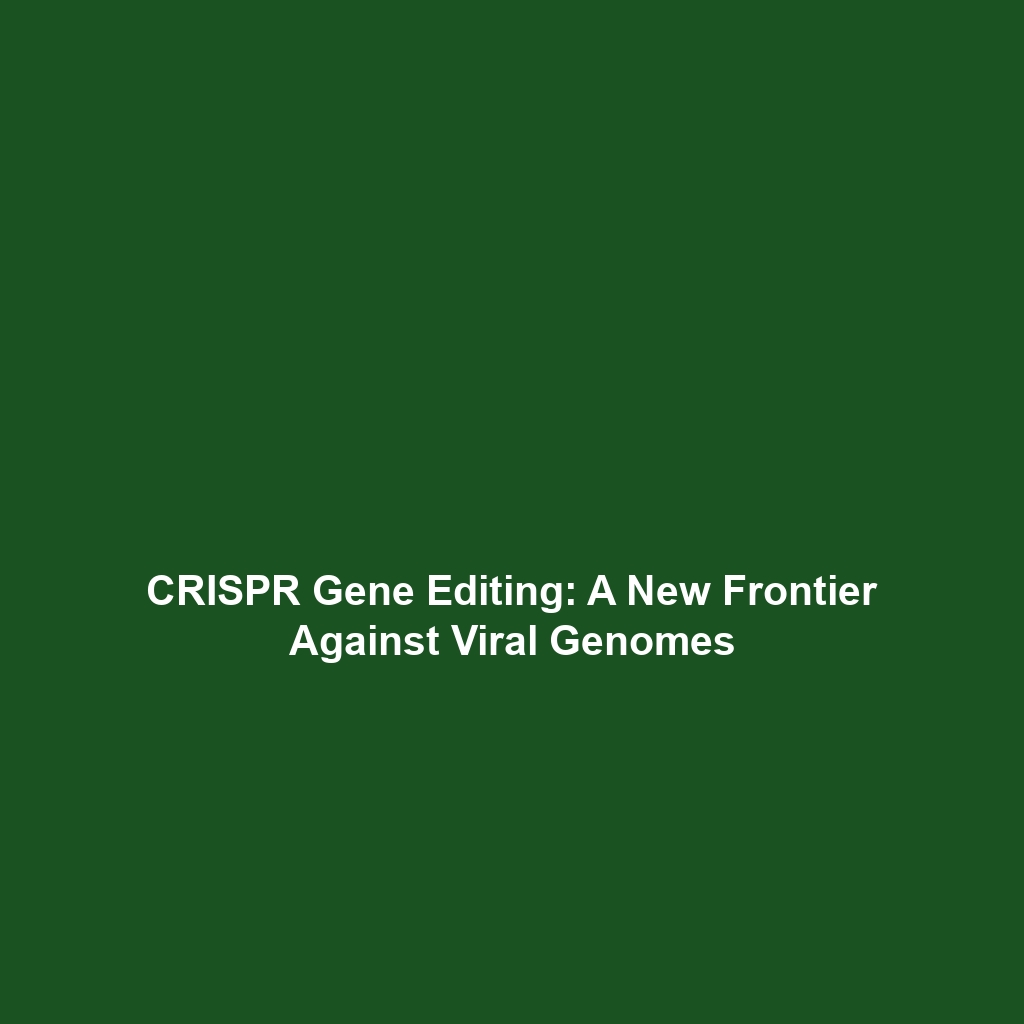Guide RNA: How RNA Sequences Direct Cas9 to Target Genes
Introduction: The advent of CRISPR gene editing has revolutionized molecular biology, enabling precise modifications to the DNA of various organisms. At the heart of this groundbreaking technology lies Guide RNA (gRNA), a critical component that directs the Cas9 nuclease to specific genetic locations. Understanding how RNA sequences guide Cas9 is essential for advancements in gene editing, therapeutic interventions, and genetic research. This article delves into the mechanism of guide RNA, its applications within CRISPR Gene Editing, and its significance in the scientific community.
Key Concepts of Guide RNA in CRISPR Gene Editing
Guide RNA is a lightweight RNA molecule engineered to be complementary to a specific DNA target sequence. It functions as a homing device, ensuring that Cas9 precisely cuts the DNA at the desired locus. Several fundamental principles govern this process:
Composition of Guide RNA
gRNA comprises two key parts: the scaffold sequence, which binds to Cas9, and the spacer sequence, which matches the target DNA. The spacer allows Cas9 to locate and bind to the DNA target, leading to its cleavage.
Mechanism of Action
Upon introduction into a cell, the gRNA-Cas9 complex scans the genome for matching DNA sequences. Once it finds the target, the complex binds to the DNA, and Cas9 induces a double-strand break, allowing for gene editing possibilities, such as gene knockout, insertion, or replacement.
Applications and Real-World Uses
The practical applications of Guide RNA in the realm of CRISPR Gene Editing are vast and transformative:
- Genetic Disorders: Researchers utilize gRNA to target and modify genes responsible for hereditary diseases, potentially providing cures through precision medicine.
- Agricultural Improvements: gRNA is employed to enhance crop resilience against pests and diseases, optimizing yield and sustainability.
- Gene Function Studies: Scientists implement gRNA in model organisms to investigate gene functions and their implications in biological processes.
Current Challenges of Guide RNA in CRISPR Gene Editing
While the potential of gRNA is immense, several challenges inhibit its widespread application:
- Off-Target Effects: gRNA may bind to unintended DNA sequences, leading to unpredicted mutations.
- Delivery Mechanisms: Efficient delivery of the gRNA-Cas9 complex into specific cells or tissues remains a technical hurdle.
- Ethical Concerns: Manipulating genetic material raises ethical questions regarding the potential consequences and responsibilities of such technologies.
Future Research and Innovations
Innovations in the field of Guide RNA and CRISPR Gene Editing are promising:
- Next-Gen gRNA Designs: Ongoing research aims to create more specific and efficient gRNAs to minimize off-target effects.
- Alternative Cas Proteins: Development of novel Cas proteins is underway to enhance the CRISPR toolbox, expanding its range of applications.
- Combination Therapies: Future studies may explore the use of CRISPR technology alongside other therapeutic methods for greater efficacy.
Conclusion
In summary, Guide RNA plays a pivotal role in directing Cas9 to target genes within the broader framework of CRISPR Gene Editing. Through understanding its mechanisms, applications, and challenges, researchers can harness its potential for groundbreaking advancements in genetics and biotechnology. To learn more about related topics, consider exploring other articles on CRISPR applications, gene therapy innovations, and ethical considerations in genetic editing.

